Glen MacPherson is a Canadian born Director Of Photography. He has been in the industry for over 25yrs. Mr MacPherson has worked with some of the worlds biggest stars and top directors. His credits include ‘Rambo’, ’16 Blocks’, ‘Friday after Next’, ‘Final Destination’ and the soon to be released ‘Resident Evil: Afterlife’. He is a member of both the American Society of Cinematographers (ASC) and the Canadian Society of Cinematographers (CSC)
Jason: How did you break into the film industry?
Glen MacPherson: I grew up in Montréal, Canada and they had a small film industry there. In Canada you go to high school until 11th grade then you spend two years in CEGEP, which is like a pre college. I took their Film/Television course and played around there for a few years. After that I went to a community college that had a great film program, I stayed for a year. At that point I was shooting third year students’ projects and I thought it was time to move on. I heard that Robert Altman was shooting a movie in Montréal. So I went back home and located their production offices. I pretended to be a delivery man, walked right past the receptionist and into the office of the producer. I told the guy my name and that I was willing to do anything to work on a movie. They didn’t throw me out; instead they gave me a job in catering. So from there I just worked my way up. I became friends with the camera guys and eventually got a job in the camera department.
J: Growing up in Canada, what films inspired you as a child?
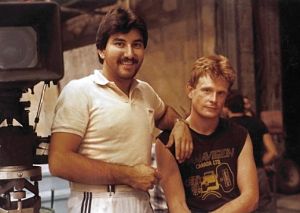 GM: As a child I lived near a drive- in theater that my friends and I got really good at sneaking into. We would climb over the fence with lawn chairs every weekend. The films that stick out in my mind from that time are Clint Eastwood’s ‘Outlaw Josey Whales’ and the James Bond films, especially ‘The Exorcist’ believe it or not. I knew as early as the sixth grade that I wanted to make movies, so it’s tough to single out any one film that inspired me. I’ve always been a fan of American cinema because that’s what I was exposed to at the drive-ins. I was just a kid in Montréal and reading American Cinematographer thinking ‘Will I ever make it to Hollywood or be in this magazine?’ I had a crew of friends from those days that all wanted to be in the industry. One guy was Stephen S. Campanelli, who’s worked on every Clint Eastwood film since ‘Bridges of Madison County’. When we were kids Steve had a huge ‘The Good, The Bad and The Ugly’ poster over his bed and even named his dog ‘Clint’. He was just a big Eastwood fan and now he’s Clint’s right-hand man.
GM: As a child I lived near a drive- in theater that my friends and I got really good at sneaking into. We would climb over the fence with lawn chairs every weekend. The films that stick out in my mind from that time are Clint Eastwood’s ‘Outlaw Josey Whales’ and the James Bond films, especially ‘The Exorcist’ believe it or not. I knew as early as the sixth grade that I wanted to make movies, so it’s tough to single out any one film that inspired me. I’ve always been a fan of American cinema because that’s what I was exposed to at the drive-ins. I was just a kid in Montréal and reading American Cinematographer thinking ‘Will I ever make it to Hollywood or be in this magazine?’ I had a crew of friends from those days that all wanted to be in the industry. One guy was Stephen S. Campanelli, who’s worked on every Clint Eastwood film since ‘Bridges of Madison County’. When we were kids Steve had a huge ‘The Good, The Bad and The Ugly’ poster over his bed and even named his dog ‘Clint’. He was just a big Eastwood fan and now he’s Clint’s right-hand man.
J: Can you tell us how you got your first job as Director of Photography on the 1989 cult classic ‘SnakeEater’?
 GM: I was a focus puller and Camera Assistant for many years and I knew George Erschbamer. He was an effects guy but he got a chance to direct ‘SnakeEater’ through Cinepix which is now LionsGate. At that time Lorenzo Lamas wasn’t in it, and they had $700,000 dollars to make the film. George knew I was trying to become a D.P. but I hadn’t shot anything, just a couple of shorts. So I sent him some samples of my work and he liked them. I believe the producers signed off on my being hired only because they told George that if I didn’t work out George would be fired too. So he took a chance on me and then Lorenzo Lamas signed on and the budget shot up to $1.2million dollars. That was my first gig. Which led to ‘SnakeEater 2’, I thought I had learned a bunch of stuff on the first picture. I remember seeing it in the theater with George. We had shot some sequence ‘day-for-night’ of the houseboat going down the river. I didn’t know anything about ‘day-for-night’ but I tried my best. There were some kids sitting in front of us saying, “What a piece of shit this movie is. What is it day or night? They can’t make up their minds.” George looks at me and says, “Let’s take these kids outside and beat the shit out of them, first we’ll agree with them. But we’ll beat the shit out of them anyways.”
GM: I was a focus puller and Camera Assistant for many years and I knew George Erschbamer. He was an effects guy but he got a chance to direct ‘SnakeEater’ through Cinepix which is now LionsGate. At that time Lorenzo Lamas wasn’t in it, and they had $700,000 dollars to make the film. George knew I was trying to become a D.P. but I hadn’t shot anything, just a couple of shorts. So I sent him some samples of my work and he liked them. I believe the producers signed off on my being hired only because they told George that if I didn’t work out George would be fired too. So he took a chance on me and then Lorenzo Lamas signed on and the budget shot up to $1.2million dollars. That was my first gig. Which led to ‘SnakeEater 2’, I thought I had learned a bunch of stuff on the first picture. I remember seeing it in the theater with George. We had shot some sequence ‘day-for-night’ of the houseboat going down the river. I didn’t know anything about ‘day-for-night’ but I tried my best. There were some kids sitting in front of us saying, “What a piece of shit this movie is. What is it day or night? They can’t make up their minds.” George looks at me and says, “Let’s take these kids outside and beat the shit out of them, first we’ll agree with them. But we’ll beat the shit out of them anyways.”
J: You’ve worked with some of the largest movie stars in the world from Morgan Freeman and Bruce Willis, as well as Sylvester Stallone, Steven Seagal and The Rock. Is it an intimidating experience working with stars?
GM: There was no intimidation factor. On a film-set there are no ‘movie stars’. Guys are just actors working. They are in make-up before I’m even on-set. I worked as a focus puller on a lot of films with big time stars and I never saw ego or attitudes. They are just normal people until they walk out on to the street and there are 300 people waiting for autographs. 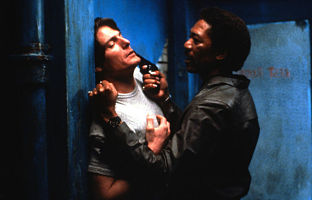 I worked on the 1987 film ‘Street Smart’ with Christopher Reeves and Morgan Freeman. In fact, Morgan was nominated for best supporting actor that year. The film also starred Mimi Rogers who was dating Tom Cruise at the time. One day Cruise came to the set shortly after he had finished ‘Top Gun’. He ended up leaving with Christopher Reeves and when they walked outside, hundreds of people were there waiting for Reeve’s autograph, I mean, he’s Superman. Cruise was wearing a cap down low and he managed to go by unnoticed.
I worked on the 1987 film ‘Street Smart’ with Christopher Reeves and Morgan Freeman. In fact, Morgan was nominated for best supporting actor that year. The film also starred Mimi Rogers who was dating Tom Cruise at the time. One day Cruise came to the set shortly after he had finished ‘Top Gun’. He ended up leaving with Christopher Reeves and when they walked outside, hundreds of people were there waiting for Reeve’s autograph, I mean, he’s Superman. Cruise was wearing a cap down low and he managed to go by unnoticed.
J: Your résumé includes two films with former D.P. turned Director Andrzej Bartkowiak . Is it easier working under a director that comes from the Cinematography world?
GM: No it was harder. He was more demanding. He knew what I could do, so he pushed me to go bigger and faster. Working under Andrzej Bartkowiak was probably the only time I ever felt intimated. Andrzej has all this experience shooting big films like ‘Lethal Weapon 4’ and ‘Speed’, he’s done amazing work. Once we started shooting it was smooth, his only real direction to me was to hurry up! He’d tell me “let’s go. This is an action movie not Academy Awards time”.
J: Can you tell us about the upcoming film ‘Resident Evil: Afterlife’?
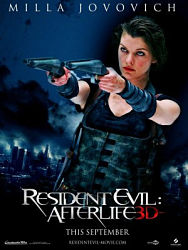 GM: We wrapped Production on ‘Resident Evil: Afterlife’ sometime before Christmas. That film we shot in 3D. They sent me the script for this one and it just read really ‘big’, plus it’s the return of Paul Ws. Anderson to the franchise. I just saw the director’s cut a few weeks ago and it’s got these really elaborate action sequences, like I said, its ‘big’. It also makes great use of the 3D; it’s not some hokey gimmick. It’s going to be the kind of movie you sit back with your bucket of popcorn and enjoy.
GM: We wrapped Production on ‘Resident Evil: Afterlife’ sometime before Christmas. That film we shot in 3D. They sent me the script for this one and it just read really ‘big’, plus it’s the return of Paul Ws. Anderson to the franchise. I just saw the director’s cut a few weeks ago and it’s got these really elaborate action sequences, like I said, its ‘big’. It also makes great use of the 3D; it’s not some hokey gimmick. It’s going to be the kind of movie you sit back with your bucket of popcorn and enjoy.
J: This is your second project in 3D after ‘Final Destination 4’. How do you prepare for a 3D shoot?
GM: It’s different, that’s for sure. Not anymore or less difficult. It’s just a different set of tools to work with. You get different headaches at night (laughs). It’s tough to make a movie now that’s not in 3D. Look at ‘Clash of the Titans’. A couple of months before the release they realized they should have shot it in 3D, so they converted it after the fact. I just heard ‘Cowboys & Aliens’, the new Jon Favreau film is going to be in 3D. Twenty years ago I worked as an assistant on a couple of small 3D IMAX films. Back then we’d shot it and wait two weeks, to see how the 3D looked. David Ellis called me to DP ‘Final Destination 4’ and I remember he told me we would shoot it in 3D.
J: How do you feel about the 3D conversion process being done after the film has been shot?
GM: I don’t think the software is quite there yet for the conversions. I heard from friends that the 3D in ‘Titans’ looks terrible. That’s because they were rushed, they only had eight weeks to do the job. The other thing is, certain artistic choices are made when you’re shooting 3D. In terms of how much is too much, and what the volume should be. In conversion you’re sort of handing those decisions off to a bunch of kids in Bulgaria to be made after the fact. It’s like shooting a movie in B&W then realizing later it should have been in color. So they go back and colorize it and think nobody will know the difference. I can definitely tell the difference of a movie shot in 3d and one that was converted in post, and I care. I’m just not sure the general audiences do. We shot this last ‘Resident Evil’ with the James Cameron Pace Fusion system; in fact there is a card in the trailer to alert audiences that this is true 3D.
J: Where do you stand in the debate of HD vs. Film?
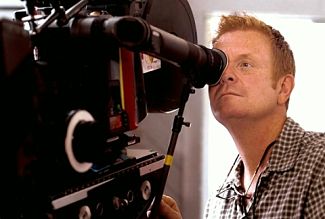 GM: All the 3D stuff is shot HD. But to be honest we are kind of beyond HD right now. We have cameras now that can shoot 4K much higher resolution. It’s a weird time in life; everybody has an iphone or some sort of mobile device that they can watch movies on. So the way things are shot has changed. I believe shooting on celluloid is dead just because it’s not convenient anymore. It’ll cost you $10,000 a print; you’ve got to truck thousands of prints to theaters all over America, and if you project digitally a file can be sent over a cable and it can be in multiple theaters. It’s not better but its way more convenient and that’s what everybody seems to be into these days. On top of that digital technology is improving every week.
GM: All the 3D stuff is shot HD. But to be honest we are kind of beyond HD right now. We have cameras now that can shoot 4K much higher resolution. It’s a weird time in life; everybody has an iphone or some sort of mobile device that they can watch movies on. So the way things are shot has changed. I believe shooting on celluloid is dead just because it’s not convenient anymore. It’ll cost you $10,000 a print; you’ve got to truck thousands of prints to theaters all over America, and if you project digitally a file can be sent over a cable and it can be in multiple theaters. It’s not better but its way more convenient and that’s what everybody seems to be into these days. On top of that digital technology is improving every week.
J: Has there ever been a time when you got on-set and thought, ‘What have I gotten myself into’?
GM: Nothing really jumps out at me. I probably blocked it from my mind. Working for years as an assistant camera man, one of the things I learned was to always be prepared and try to work with the best crew possible. It’s rare I show up on a set and start lighting. Most of the time, I’ve had people at a location doing pre-lighting. So by the time we get there it’s a pretty simple affair. That’s what they pay you for; if you’re not shooting, you’re wasting money. Guys like Andrzej want to be shooting fifteen minutes after the call time. Same with Richard Donner; he walks on-set and wants to start shooting right away. So you do what needs to be done in order to prepare a location and have it ready to shoot.
J: Richard Donner is a veteran action director responsible for some of the genre’s classics. You shot the Bruce Willis film ’16 Blocks’ under Donner’s direction. When working with a veteran like this, is the process collaborative or one-sided?
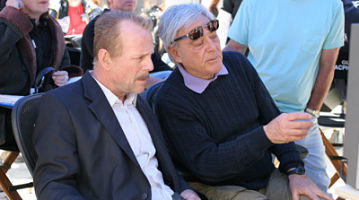 GM: It’s a total collaboration. Richard Donner has been making films for years and he knows what he’s doing. I remember in pre-production Donner said “Hey kid, I don’t like to do shot lists”, he was always calling me ‘kid’. That works for me. However a lot of first time directors get pressured from the producers to come up with a shot list. They’ll keep that list in their pockets and by the middle of the day if the production is behind they’ll force the director to drop shots. But nobody does that to Richard Donner.
GM: It’s a total collaboration. Richard Donner has been making films for years and he knows what he’s doing. I remember in pre-production Donner said “Hey kid, I don’t like to do shot lists”, he was always calling me ‘kid’. That works for me. However a lot of first time directors get pressured from the producers to come up with a shot list. They’ll keep that list in their pockets and by the middle of the day if the production is behind they’ll force the director to drop shots. But nobody does that to Richard Donner.
J: How did you become involved with Sylvester Stallone and collaborating on ‘Rambo 4’?
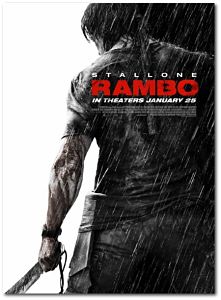 GM: I turned that movie down originally. The producer called me up and asked if I could meet with Sylvester Stallone the following day. So I met Sly and it all sounded cool, but they didn’t really have a start date. I told the producer that I was meeting with Michael Dougherty about shooting his first film ‘Trick ‘R Treat’, which was a much smaller film budget-wise. It was being produced by Brian Singer and I really liked the script and got on well with the director. So I took that movie, I had to call the producer of ‘Rambo’ and tell him that I took another project. He wasn’t happy; it was like something you see in the old movies when the producer shouts “you’ll never work in this town again”! He says to me “Sly likes Glen, now I got to tell Sly that Glen doesn’t like him.” Then on the last day of shooting ‘Trick ‘R Treat’ I got a call from the same producer informing me that ‘Rambo’ had been pushed back and they still wanted me for the job, four days later I was in Thailand.
GM: I turned that movie down originally. The producer called me up and asked if I could meet with Sylvester Stallone the following day. So I met Sly and it all sounded cool, but they didn’t really have a start date. I told the producer that I was meeting with Michael Dougherty about shooting his first film ‘Trick ‘R Treat’, which was a much smaller film budget-wise. It was being produced by Brian Singer and I really liked the script and got on well with the director. So I took that movie, I had to call the producer of ‘Rambo’ and tell him that I took another project. He wasn’t happy; it was like something you see in the old movies when the producer shouts “you’ll never work in this town again”! He says to me “Sly likes Glen, now I got to tell Sly that Glen doesn’t like him.” Then on the last day of shooting ‘Trick ‘R Treat’ I got a call from the same producer informing me that ‘Rambo’ had been pushed back and they still wanted me for the job, four days later I was in Thailand.
J: ‘Rambo 4’ was my favorite film of 2008 and the bloodiest most violent action film in memory. Can you tell us about the filming of these sequences?
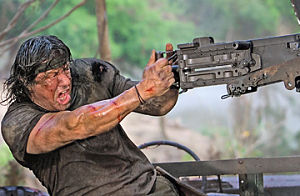 GM: It was a lot of fun, we actually laughed a lot. The ‘badguy’ at the end that gets blown away by Rambo’s 50 cal. Machine gun is actually just a dummy filled with Jell-O. My crew and I put garbage bags on over our clothes because we knew that we’d be splattered. So we start rolling; Stallone shoots up the dummy, and we all run to the monitors to watch it explode in slow-motion. It’s funny at the time; but later I had people coming up to me and saying ’Holy shit, that movie was so violent I had to close my eyes”. I can’t watch it that way, I just see Jell-O flying and dummies exploding. It never seemed that violent to me but apparently it is. There were a few things the second unit did that were a little much, stabbing babies and such. I remember watching dailies and saying “Sly (Stallone), are you kidding me?” and he responded “What? This has to be f***ing real. We aren’t doing some stupid PG movie. You have to hate these guys!” The cut I saw there was a shot of a lady holding a baby, then a bad guy bayonets the baby throws it into the fire and shoots the mother.
GM: It was a lot of fun, we actually laughed a lot. The ‘badguy’ at the end that gets blown away by Rambo’s 50 cal. Machine gun is actually just a dummy filled with Jell-O. My crew and I put garbage bags on over our clothes because we knew that we’d be splattered. So we start rolling; Stallone shoots up the dummy, and we all run to the monitors to watch it explode in slow-motion. It’s funny at the time; but later I had people coming up to me and saying ’Holy shit, that movie was so violent I had to close my eyes”. I can’t watch it that way, I just see Jell-O flying and dummies exploding. It never seemed that violent to me but apparently it is. There were a few things the second unit did that were a little much, stabbing babies and such. I remember watching dailies and saying “Sly (Stallone), are you kidding me?” and he responded “What? This has to be f***ing real. We aren’t doing some stupid PG movie. You have to hate these guys!” The cut I saw there was a shot of a lady holding a baby, then a bad guy bayonets the baby throws it into the fire and shoots the mother.
J: Was shooting the final battle with practical explosions (i.e. no CGI) a unique experience?
GM: The special effects guys were from London, and we were walking around the set preparing for the scene. That’s when we all realized it was going to be a massive battle, much bigger than any of us had imagined or prepared for. Even the effects guys were surprised, in fact they didn’t have enough time to get all the squibs and explosive materials into Thailand within the two months prep time. So we actually postponed shooting that sequence in order to give them time to acquire all the materials they needed to satisfy the scene. But in the end they made it happen, that was real important to Stallone, he kept saying to me “…this ain’t going to be some CGI movie”.
J: How was it working in the oppressive heat and filming on location in the jungle?
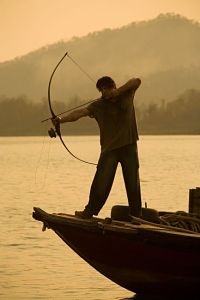 GM: We started in Feb. and finished at the end of May. Beginning in April and then into May it started to get real hot. There were guys dressed up in full solider garb and a couple of them fainted in the 116 degree heat. When it started getting really hot we began shooting nights, so it would be 85 degrees out in the middle of the night. It really wasn’t that bad. Ya know, when we first got to Thailand in early Feb. it would be freezing in the mornings, we were all huddled up wearing winter coats until the sun came out. However during this time all the farmers in northern Thailand start burning their fields in order to plant new crops. That ensuing smoke came South into this little valley where we were shooting, apparently that year 2007 was the worst year of air quality on record. The government called a state of emergency, but that what gave us that look in ‘Rambo’. Everything is smoke-y and kind of blown-out. The crew was fantastic there I must say, and labor is cheaper. I think I had something like 55 grips on that shoot.
GM: We started in Feb. and finished at the end of May. Beginning in April and then into May it started to get real hot. There were guys dressed up in full solider garb and a couple of them fainted in the 116 degree heat. When it started getting really hot we began shooting nights, so it would be 85 degrees out in the middle of the night. It really wasn’t that bad. Ya know, when we first got to Thailand in early Feb. it would be freezing in the mornings, we were all huddled up wearing winter coats until the sun came out. However during this time all the farmers in northern Thailand start burning their fields in order to plant new crops. That ensuing smoke came South into this little valley where we were shooting, apparently that year 2007 was the worst year of air quality on record. The government called a state of emergency, but that what gave us that look in ‘Rambo’. Everything is smoke-y and kind of blown-out. The crew was fantastic there I must say, and labor is cheaper. I think I had something like 55 grips on that shoot.
J: A significant portion of ‘Rambo’ is shot at night and in the rain. Did this present a new set of problems when filming?
GM: We had some really big nighttime jungle sequences. The art department built that village used as the Keran rebel home from scratch. They built the rice paddies and roads, some even slept in the huts when we were shooting on those sets. I went beforehand with my gaffer Michael Galbraith to prep the sets and get an idea of where we could hide lights. You can’t pin Sly down. He’s prepared but he doesn’t like to be told that he can only shoot in one direction tonight. So we had to light up three miles of jungle every night. I had 13 200ft cranes, some on remote control in order to achieve that. I don’t think you could have made that film in the states. It would have been way too expensive.
J: Recently Stallone has said he’s almost positive that there would never been a ‘Rambo 5’. Do you know if the planned sequel is officially dead?
GM: I hear rumors here and there; Millennium is keen on doing another one. When we were shooting the last one I asked Stallone if there would be a ‘Rambo 5’. He said, “No, What’s he going to do hit him with his cane?” I guess we’ll have to see how well ‘The Expendables’ does.
J: Have you thought about taking on directing duties? Will we see a picture directed by Glen MacPherson soon?
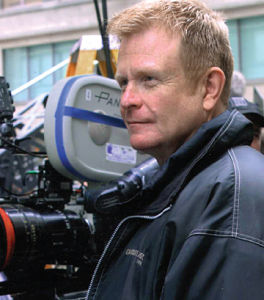 GM: A lot of DP’s do it. There is a joke going around the industry; the two entry level positions on a movie are craft services and director. A few years ago there was a trend of hiring first time directors who had maybe done a few shorts then giving them an 80 million dollar movie. They would surround them with a first rate DP and production designers, even a veteran AD. People that would help guide them through the movie. The problem is that the DP was blocking and helping the directors with the actors. So at the end of the day you go home thinking, ‘Jesus I’m doing all the work and this guy is getting the residuals and another project to direct”. I hear that from a lot of cinematographers. Sometimes people will say to me, “You should direct!”, and I think “Damn right, I should direct.” Then in my case I work with someone like Richard Donner or Gillies MacKinnon, and I think “Who am I kidding?” there is a big difference. I’d probably end up doing some ‘Stargate’ on T.V. or something if I directed. Really it’s a whole different talent set, and I don’t think I have that. So I really just want to continue working with these great directors. That’s more satisfying than doing some half-assed directing job.
GM: A lot of DP’s do it. There is a joke going around the industry; the two entry level positions on a movie are craft services and director. A few years ago there was a trend of hiring first time directors who had maybe done a few shorts then giving them an 80 million dollar movie. They would surround them with a first rate DP and production designers, even a veteran AD. People that would help guide them through the movie. The problem is that the DP was blocking and helping the directors with the actors. So at the end of the day you go home thinking, ‘Jesus I’m doing all the work and this guy is getting the residuals and another project to direct”. I hear that from a lot of cinematographers. Sometimes people will say to me, “You should direct!”, and I think “Damn right, I should direct.” Then in my case I work with someone like Richard Donner or Gillies MacKinnon, and I think “Who am I kidding?” there is a big difference. I’d probably end up doing some ‘Stargate’ on T.V. or something if I directed. Really it’s a whole different talent set, and I don’t think I have that. So I really just want to continue working with these great directors. That’s more satisfying than doing some half-assed directing job.
J: You’ve worked with many first-time directors, including Michael Dougherty on ‘Trick R Treat’, how do you handle working with a novice?
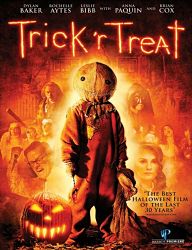
GM: Well, Michael has been around. He wrote ‘X-men 2’ and ‘Superman Returns’, he’s a really smart and talented guy. He was born on Halloween, so he’s been living with this story. Yeah, he was a first time director but man he was so well prepared and had this really unique vision for the movie. So he’s an anomaly as far as first time Directors.
J: What can we expect next from Glen MacPherson?
GM: ‘Resident Evil: Afterlife’ is going to be a big fun popcorn movie; it’s something I would go see. I’m heading up to Toronto next week to do some work with the visual effects guys. There are a lot of effects in the movie and when working with 3D, there are many artistic choices that need to be made. We are going up to look at the ‘style’ of the movie; we have a very clear vision of how we want the picture to ‘look’. So we need to make sure that the visual effects are all falling into place. I got along really well with Paul Ws. Anderson; I jokingly refer to him as Paul ‘WideShot’ Anderson. Because nothing is wide enough for Paul, I’d show him our wide-shot and he’d say go “Wider”. I’d end up on a ladder in the farthest corner of the stage and he’d ask me;”Can we get wider?” Paul has a couple of projects lined up one of which will be ‘The Three Musketeers-3D’. It’s a new take on the ‘Musketeers’ in the same vein as the latest ‘Sherlock Holmes’ film. We may shoot that in Germany, so it looks like a busy year.

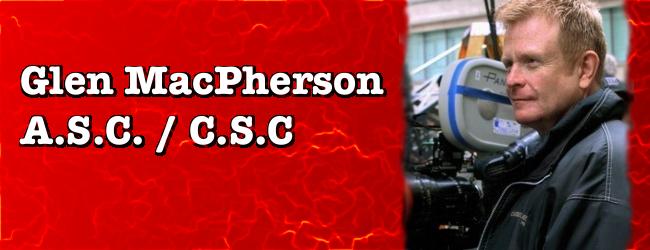
I knew Glen had talent ever since the night we melted my father’s ceiling tiles in the basement while lighting a shot. They remain as a testament to….something.
I am so honored to have worked with Glen , pleasure to watch !